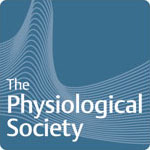No stomach for it: investigating antacid medication
Class practical
Use a volume of dilute hydrochloric acid that models the volume and concentration of our stomach contents. Add typical doses of a range of over-the-counter antacid preparations – powders, tablets and liquids. Monitor the changing pH with Universal indicator solution (or a pH probe). Compare the effects of different preparations and discuss the short and long-term consequences of using each medicine.
Lesson organisation
Organisation may depend on the number of pH probes and meters you have, or the range of antacids you want to try. Students working in pairs would each be able to investigate one or two antacids.
Apparatus and Chemicals
For each group of students:
Beaker, 100 cm3, 2 per antacid to be tested
Mortar and pestle
Measuring cylinder, 100 cm3
For the class – set up by technician/ teacher:
Hydrochloric acid, dilute, 0.01 M, 100 cm3 for each antacid for each working group (see CLEAPSS Hazcard and Note 1)
Universal indicator solution, in dropping bottles (Note 2)
Antacids, with details of dosage from packaging
Health & Safety and Technical notes
1 Hydrochloric acid is described by CLEAPSS as an IRRITANT at concentrations above 2.0M, causes burns and is irritating to the respiratory system. The acid used here is much more dilute and presents a minimal hazard to students.
2 Universal indicator – see CLEAPSS Hazcard and Recipe card. The bottled solution is highly flammable.
Ethical issues
There are no ethical issues associated with this procedure.
Procedure
SAFETY: Take care when making up the dilute acid.
Preparation
a Make up the dilute hydrochloric acid by serial dilution (1 in 10, twice) from 1 M acid. (Note 1.)
b Copy (and enlarge if necessary) the details of typical doses of antacids from the packaging.
c Set up a few beakers of 50 cm3 of water with indicator, to show what a neutral pH would look like.
Investigation
d Measure 50 cm3 of dilute acid into each of two beakers. Add enough Universal indicator to get a clearly visible colour. (Note 2.)
e Sit both beakers on a sheet of white paper.
f Keep one beaker for comparison, as small changes in the acid pH range can be hard to see.
g Add a normal dose of antacid to the other beaker and watch the colour change. If the antacid is in tablet form, crush the tablet in a mortar with a pestle before adding to the acid.
h Decide which antacid is making the greatest change, or the quickest change. Record any other observations – such as effervescence.
i If using a pH probe, plot a graph of pH against time over 10-15 minutes.
Teaching notes
The approximate relaxed volume of our stomach is 50 cm3, but it is able to expand to nearly 4 dm–3. The lowest pH of secreted acid is about 0.8; it is diluted in the stomach to an ideal pH of around 1.4. The stomach secretes acid to produce the optimum pH for the action of pepsin. An excess of acid is sometimes produced. This results in acid indigestion in the short term, or could result in ulceration of the stomach lining if high concentrations of acid persist. Antacids have been developed to treat short-term excesses. Other pharmaceuticals are used to treat long-term imbalance of acid production.
Students may be surprised how little the pH changes when the antacid is added.
It is interesting to compare liquids with powders, and to see just how slowly an uncrushed tablet reacts.
There are ingredients other than antacids in many over-the-counter preparations with an effect on indigestion. Some include a mucilaginous component which coats the stomach lining, and may protect the lining tissue from damage by acid. This could lead into a more detailed exploration of the structure of the stomach and the different tissues making up the organ.
Discuss the issues associated with long-term use of antacid preparations. Ideas are listed below.
- Pepsin operates best at acid pHs. Using antacids before meals, or immediately after, could reduce the rate of digestion
- The body has many mechanisms for maintaining balance. Is it possible that taking antacid medication regularly would stimulate the gastric lining to make more acid, to restore normal pH?
Health & Safety checked, October 2008
 |
|
Thanks to the British Pharmacological Society and British Physiological Society for help in developing this procedure. |



